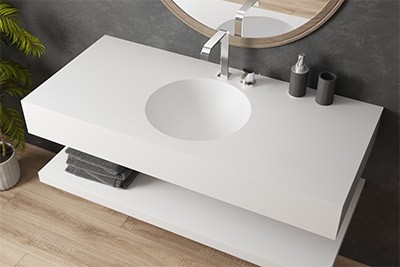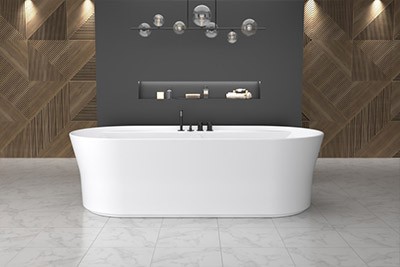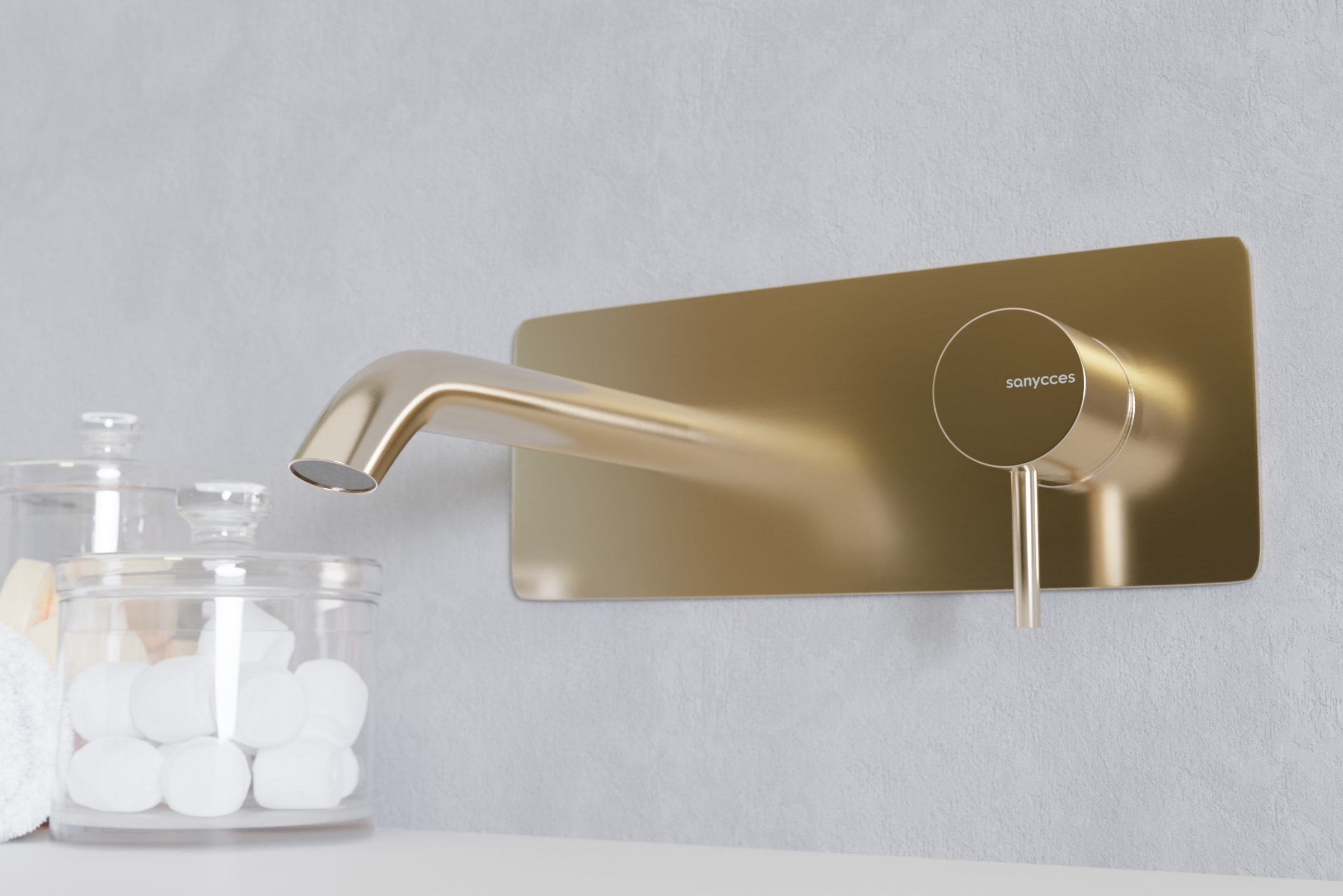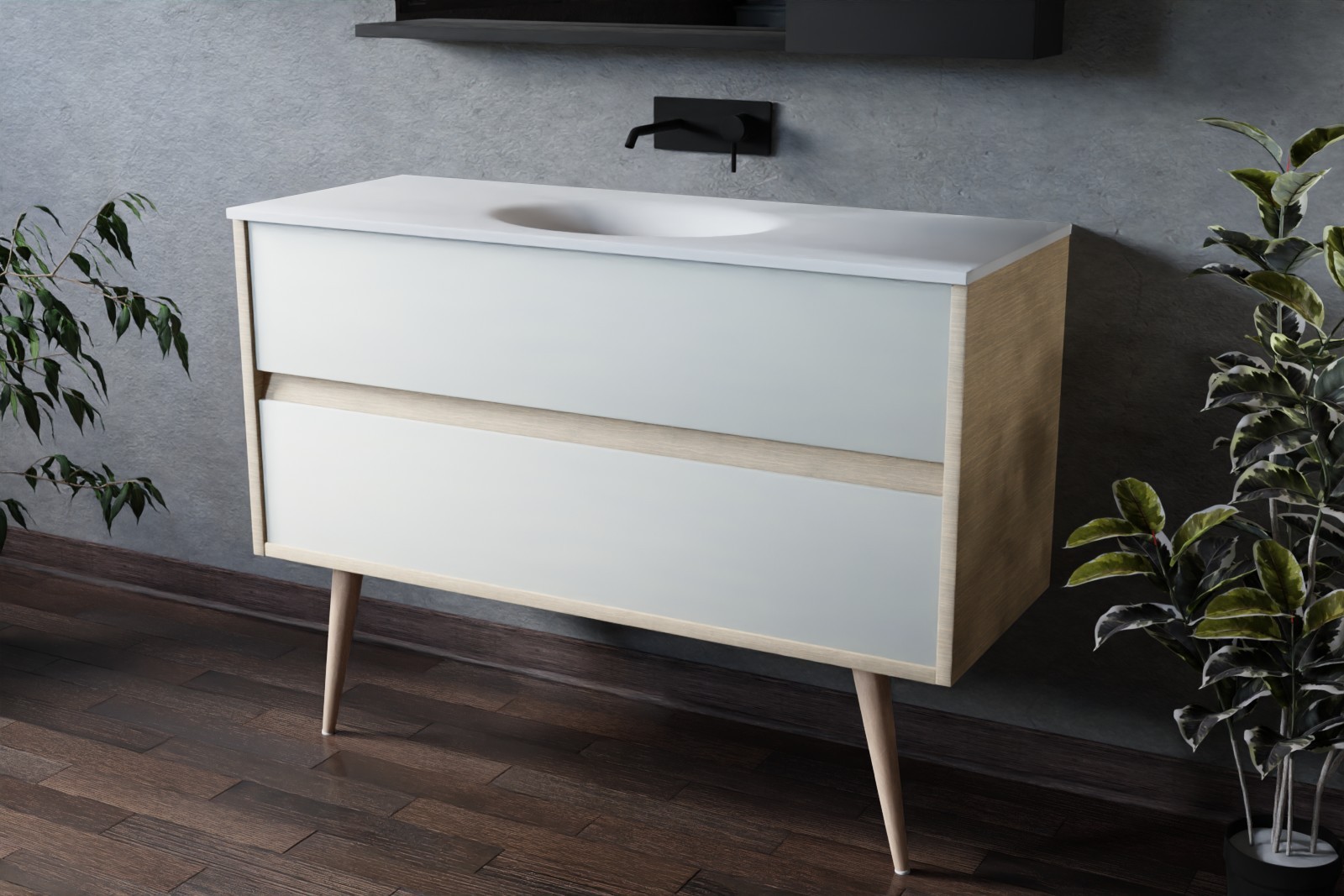If you're reading this article, you're probably building, designing or renovating your bathroom. The bathroom is one of the most important rooms in your home, so it's important to make this space comfortable and functional. One of the key elements of any bathroom is the ceiling. In this article, we'll take a closer look at the different types of ceiling you can install in your bathroom, considering their advantages and disadvantages.
.jpg)
The different options for a bathroom ceiling
Suspended ceiling
Suspended ceilings are one of the most popular options for modern bathrooms. It is easy to install and offers great design flexibility. The suspended ceiling is made up of lightweight panels connected to a network of metal beams. These beams are attached to the existing ceiling using S-hooks. The panels are then inserted into the beam system to create the final ceiling.
Suspended ceilings are available in a variety of materials such as plasterboard, PVC or fibreglass. Each of these materials has different advantages. Drywall is waterproof and provides good sound insulation. PVC panels are easy to clean and resistant to moisture, and fibreglass panels are also resistant to mould and damp.
Plaster ceiling (plasterboard)
Plaster ceilings are a classic choice for older homes or for people who prefer a more traditional look. Plaster ceilings, or more commonly plasterboard, are made from plasterboard that is fixed to the ceiling with screws directly onto metal rails. The joints between the panels are then concealed with tape and plaster to create a smooth surface. For the bathroom, take care to choose water-repellent plasterboard, which will resist humidity, unlike BA13, which will quickly become waterlogged and rot.
Plaster ceilings are generally more expensive than suspended ceilings because of the labour required to install them. However, in terms of outright cost, it can usually be more attractive. Plaster ceilings can be adorned with decorative mouldings for a more elegant look and offer great flexibility in terms of design.
.jpg)
Wooden ceiling
Wooden ceilings are a popular option for homes with a rustic, traditional style, but especially in mountain chalets. Wooden ceilings are generally made from solid wood planks, or panelling for the more economical solution. The boards are simply fixed to the ceiling using nails or screws. Some installations leave the screws or nails visible, while others give you the option of hiding them.
Wood ceilings offer great flexibility in terms of design and colour. The planks can be arranged in different configurations to create a unique pattern, and can also be painted or stained to match your bathroom décor.
Metal ceiling
Metal ceilings are still a little-used choice, but bring a real modern look to contemporary bathrooms. Metal ceilings are made from metal panels that are fixed to the ceiling using clips or screws. The panels are available in a variety of finishes, including stainless steel, aluminium and copper.
Metal ceilings are water-resistant and easy to clean, making them ideal for use in the bathroom. They are also durable and can withstand knocks and scratches. They are expensive to buy, but you can often install them yourself, saving hours of labour.
Stretch ceiling
Stretch ceilings are a modern choice for high-end bathrooms. Stretch ceilings are made from high-performance PVC fabric that is attached to the ceiling using aluminium profiles. These profiles are fixed around the perimeter of the room, then the fabric is heated to stretch it over the ceiling.
Stretch ceilings are available in a wide variety of colours and finishes, including metallic and gloss finishes. They are water-resistant and easy to clean. Stretch ceilings are also resistant to mould and bacteria, making them ideal for use in the bathroom. Price-wise, they remain one of the most expensive options on the market, but will add real value to your bathroom.
.jpg)
Concrete ceiling
A concrete ceiling is a bold choice for a bathroom. Concrete ceilings are made from concrete poured over the existing ceiling. The concrete is then sanded to create a smooth surface. It's easy to cover an existing ceiling, provided it's not damp, because it's never a good idea to trap moisture.
Concrete ceilings offer a modern, industrial look that will match perfectly with a black worktop or black and wood furniture. They are also water-resistant and easy to clean. Concrete ceilings can be painted if you're not happy with the look.
Plant ceiling
One of the most fashionable options at the moment. The plant ceiling is an eco-friendly option for bathrooms that will add character and a touch of zen to your relaxation area. Plant ceilings are made from plants suspended from the ceiling using a specialised support system. The plants are grown in containers suspended from the ceiling and can be watered regularly. Despite the humidity that can be found in a bathroom, this is not enough - the plants need to be maintained regularly to keep them looking attractive.
Plant ceilings offer a natural, organic look. They can also help to purify the air in the bathroom by absorbing atmospheric pollutants.
In conclusion, choosing the type of ceiling for your bathroom will depend on your personal style, your budget and the functionality you are looking for. Suspended, plaster, wood, metal, stretch fabric, concrete and plant ceilings are all options to consider. Make sure you choose a ceiling that suits your needs and tastes.






